A group of students* from The Sustainable Innovation MBA Class of 2018 travelled to Washington, D.C. in May to advocate on Capitol Hill on behalf of CARE International. The CARE National Conference, now in its 16th year convening, brings together citizen advocates, corporate responsibility professionals, philanthropists, humanitarians, and international development experts for advocacy training and congressional meetings on Capitol Hill.
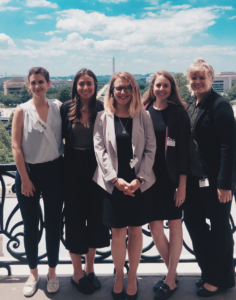 Over the course of three days, the students participated in numerous educational sessions, learning about CARE’s impact and outlining the policy and political goals for the year. This year’s theme, “Your Voice, A World of Change” lifts up and celebrates the advocates whose voices help CARE continue to be the leader in creating positive change for women and girls on the global stage. The conference kicked off with prominent figures and speakers in the foreign aid space including Sally Yates, former Acting Attorney General; Helene D. Gayle; Senator Amy Klobuchar (D-MN), and multiple CARE and CARE Action! Voices.
Over the course of three days, the students participated in numerous educational sessions, learning about CARE’s impact and outlining the policy and political goals for the year. This year’s theme, “Your Voice, A World of Change” lifts up and celebrates the advocates whose voices help CARE continue to be the leader in creating positive change for women and girls on the global stage. The conference kicked off with prominent figures and speakers in the foreign aid space including Sally Yates, former Acting Attorney General; Helene D. Gayle; Senator Amy Klobuchar (D-MN), and multiple CARE and CARE Action! Voices.
Designed for new CARE advocates, the conference hosts a comprehensive introduction to successful advocacy: Advocacy 101, Congress 101, and CARE: Our Story. New advocates leave sessions with enhanced legislative understanding and overviews of this year’s top priorities for CARE.
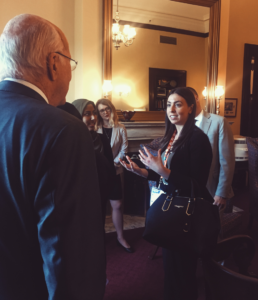 Prepared with discussion points for the advocacy day on Capitol Hill, The Sustainable Innovation MBA students set out to meet with the offices of Vermont’s Congressional delegation: Representative Peter Welch, Senator Bernie Sanders and Senator Patrick Leahy. In the meetings with the Congressional offices, the students advocated for co-sponsorship of the International Violence Against Women’s Act, a bipartisan bill to ensure that gender-based violence is a top U.S. foreign policy priority. This issue is an important priority because an estimated one in three women will face physical, mental or sexual abuse in their lifetimes. Violence against women has an immeasurable impact on women and girls, their families and their communities. IVAWA elevates the importance of these issues and places them at the center of U.S. foreign diplomacy.
Prepared with discussion points for the advocacy day on Capitol Hill, The Sustainable Innovation MBA students set out to meet with the offices of Vermont’s Congressional delegation: Representative Peter Welch, Senator Bernie Sanders and Senator Patrick Leahy. In the meetings with the Congressional offices, the students advocated for co-sponsorship of the International Violence Against Women’s Act, a bipartisan bill to ensure that gender-based violence is a top U.S. foreign policy priority. This issue is an important priority because an estimated one in three women will face physical, mental or sexual abuse in their lifetimes. Violence against women has an immeasurable impact on women and girls, their families and their communities. IVAWA elevates the importance of these issues and places them at the center of U.S. foreign diplomacy.
The second request made to the Vermont delegation was to support the International Affairs Budget FY 2019 and request a funding increase that returns to the Obama-era funding levels. Proposed budget cuts by the Trump administration would slash funding for critical foreign assistance programs and jeopardize millions of lives around the globe.
Vermonters are lucky to live in a state where all members of the delegation are receptive and engaged in policy to sustain funding for international aid and development. Over the course of the CARE National Conference the students gained great insight into the top priorities for foreign aid policy and how to engage with political leadership to influence change.
*Andria Denome, Camille Fordy, Madeline Brumberg, Julia Lyon, and Kaitlin Sampson

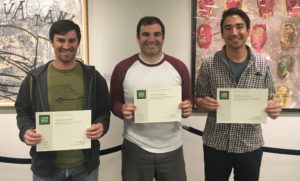 Today, the importance of LEED is underestimated, and the students believe that it will soon become the norm, becoming part of all building codes. The built environment accounts for more than a third of our total energy usage, as well as an immense amount of fresh water. And buildings take up a lot of space, disrupting natural drainage systems and increasing the urban heat island affect. Leadership in Energy and Environmental Design (LEED) is a certification system made to create greener buildings and more livable urban environments. It is estimated that people will spend up to 90% of their time indoors, so it makes sense to prioritize both healthier and more environmentally friendly buildings.
Today, the importance of LEED is underestimated, and the students believe that it will soon become the norm, becoming part of all building codes. The built environment accounts for more than a third of our total energy usage, as well as an immense amount of fresh water. And buildings take up a lot of space, disrupting natural drainage systems and increasing the urban heat island affect. Leadership in Energy and Environmental Design (LEED) is a certification system made to create greener buildings and more livable urban environments. It is estimated that people will spend up to 90% of their time indoors, so it makes sense to prioritize both healthier and more environmentally friendly buildings.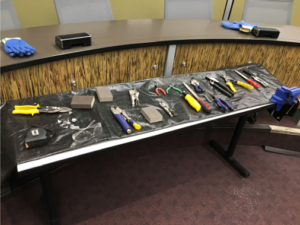 Against the auditorium style seating a table was set up and laid out with what could be confused as the tools from
Against the auditorium style seating a table was set up and laid out with what could be confused as the tools from 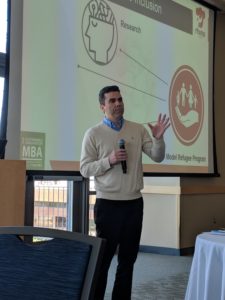
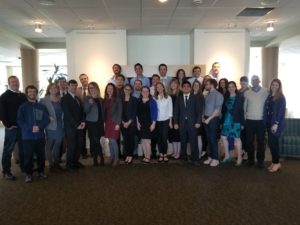 Students pitched scoping for projects at companies such as Keurig Green Mountain, Griffith Foods, Essilor, Seventh Generation, and Caterpillar.
Students pitched scoping for projects at companies such as Keurig Green Mountain, Griffith Foods, Essilor, Seventh Generation, and Caterpillar.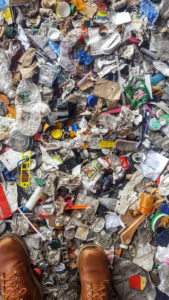 If you are like a lot of people you probably don’t, and you hope or wish that the items you put in the bin get recycled. But this “wishcycling” can actually do more harm than just throwing contaminated or non-recyclable items away. On a recent site visit to
If you are like a lot of people you probably don’t, and you hope or wish that the items you put in the bin get recycled. But this “wishcycling” can actually do more harm than just throwing contaminated or non-recyclable items away. On a recent site visit to 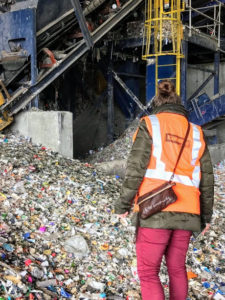 When non-recyclable items don’t make it through the system they are sent to the landfill or to an incinerator. This includes all of those small plastics, random pieces of metal, plastic bags, and more. This is why it is really important to check with your local recycler to see what products they take in the blue bin and which have special instructions.
When non-recyclable items don’t make it through the system they are sent to the landfill or to an incinerator. This includes all of those small plastics, random pieces of metal, plastic bags, and more. This is why it is really important to check with your local recycler to see what products they take in the blue bin and which have special instructions. Mike Dupee, Lecturer in The Sustainable Innovation MBA program and a Certified Biomimicry Professional, introduced us to biomimicry, which is the innovation approach centered on the “conscious emulation of nature’s genius.” As humans strive towards innovation – doing things faster, better, more creatively, and at lower cost – looking more closely at the natural world around us shows that this is one of the oldest processes on the planet. The plants, animals, and microbes that have survived the 3.8 billion years of our planet are the ultimate innovators and as businesses seek to solve problems and develop new strategies, there is much that can be learned from them.
Mike Dupee, Lecturer in The Sustainable Innovation MBA program and a Certified Biomimicry Professional, introduced us to biomimicry, which is the innovation approach centered on the “conscious emulation of nature’s genius.” As humans strive towards innovation – doing things faster, better, more creatively, and at lower cost – looking more closely at the natural world around us shows that this is one of the oldest processes on the planet. The plants, animals, and microbes that have survived the 3.8 billion years of our planet are the ultimate innovators and as businesses seek to solve problems and develop new strategies, there is much that can be learned from them.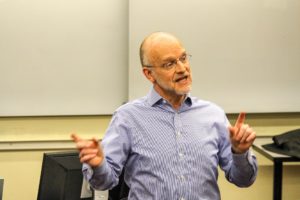 Reed got his start in advocacy and grassroots work in Michigan. He discussed the evolution of his thinking from an “us versus them” mentality (environmentalists versus business) to understanding business’s role in society (and the part that sustainability-minded professionals can play).
Reed got his start in advocacy and grassroots work in Michigan. He discussed the evolution of his thinking from an “us versus them” mentality (environmentalists versus business) to understanding business’s role in society (and the part that sustainability-minded professionals can play).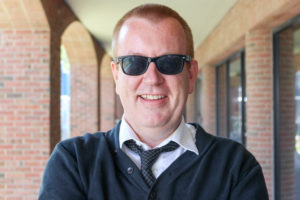 Why did you choose to attend The Sustainable Innovation MBA program?
Why did you choose to attend The Sustainable Innovation MBA program?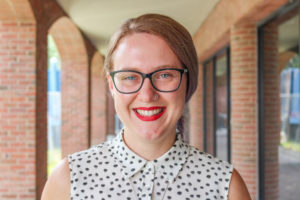 I chose to attend The Sustainable Innovation MBA program because I want to find real-world solutions for the social and environmental issues we face today. I see deficiencies in the private, public and NGO worlds that are preventing each of these sectors from properly addressing these issues. I think that business has the most opportunity to transform itself to become an engine for change in the world. I hope to be a change agent in the business world to leverage its power for good.
I chose to attend The Sustainable Innovation MBA program because I want to find real-world solutions for the social and environmental issues we face today. I see deficiencies in the private, public and NGO worlds that are preventing each of these sectors from properly addressing these issues. I think that business has the most opportunity to transform itself to become an engine for change in the world. I hope to be a change agent in the business world to leverage its power for good.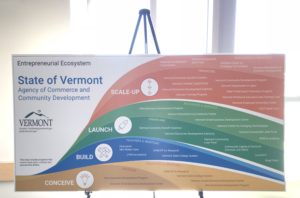 On April 5th, 2018 the University of Vermont hosted the 13th annual Invention2Venture Conference for entrepreneurs, inventors and students alike. The conference focused on how to finance, protect and commercialize inventions, as well as how to thrive in the New England tech world.
On April 5th, 2018 the University of Vermont hosted the 13th annual Invention2Venture Conference for entrepreneurs, inventors and students alike. The conference focused on how to finance, protect and commercialize inventions, as well as how to thrive in the New England tech world.